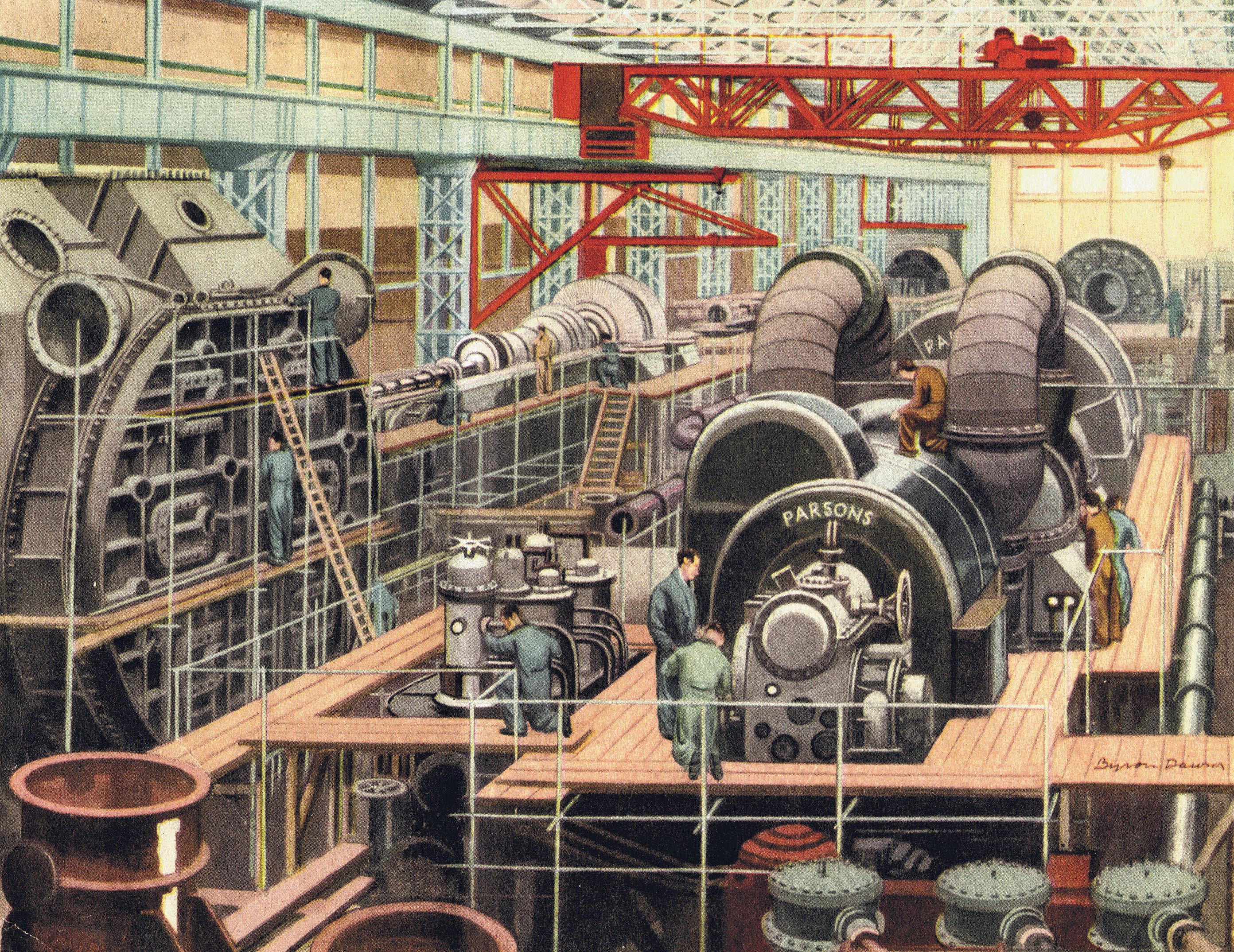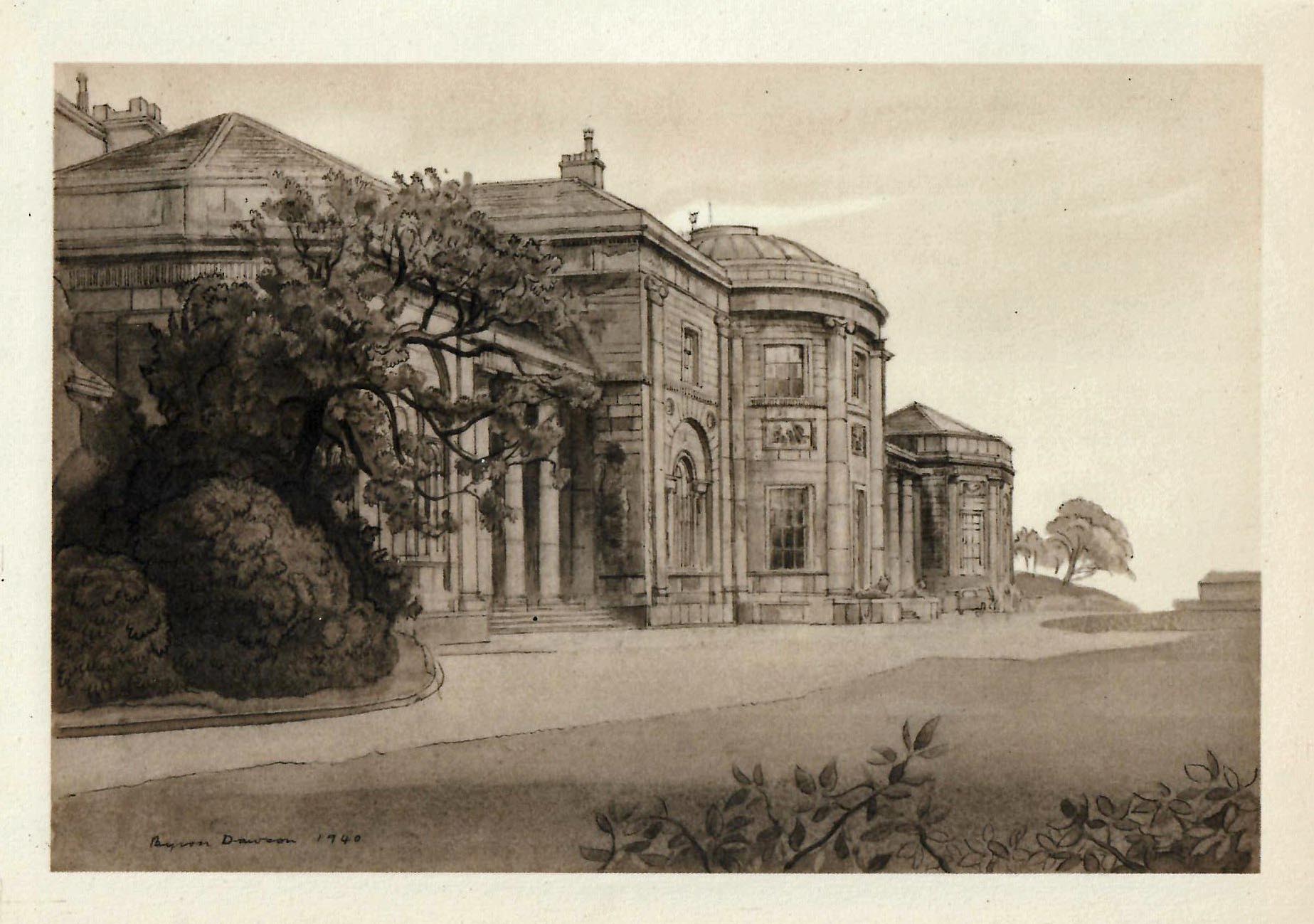Regular readers will know that Heaton has been home to a number of accomplished artists: Alfred Kingsley Lawrence, once of 42 Heaton Road, whose paintings grace the Houses of Parliament, the Bank of England and many national galleries; John Wallace, formerly of 28 Kingsley Place, whose work you can see in the Shipley and the Laing, and John Gilroy, commemorated by a plaque on the wall of his home, 25 Kingsley Place, who painted royalty, politicians, even a pope, but is best known for his commercial art for Guinness.
We would now like to add Byron Eric Dawson to our Heaton artistic ‘Hall of Fame’. Heaton History Group’s Arthur Andrews remembers that, back in 2008, before Heaton History Group was even a twinkle in our eye, he cut out this article from the ‘Evening Chronicle’.

He had been impressed with Dawson’s drawings and saddened by his penniless demise. The 50th anniversary of the artist’s death in 2018 seemed to pass unnoticed so, to rectify this, Arthur wondered whether Dawson had, by any chance, any connection with Heaton and when his research showed that to indeed be the case, our intrepid researcher set about discovering more.
Family
Born in 1896, Byron was the youngest son of Samuel and Kate Dawson, who originally came from Lincolnshire but moved to Banbury in Oxfordshire, where Byron and his elder brother, Horace, were born. Kate died in 1906 at the age of 36, when Byron was only 11 and Horace 13.
It appears that the family then split up as, by the 1911 Census, 17 year old Horace was living as a boarder in Harrow, Middlesex, while working as an assistant clerk for the Local Government Board. During WW1, Horace served in the Household Cavalry. He died in Western General Hospital, Manchester on 23 April 1917.
Byron, meanwhile, had gone to live with his mother’s sister, Lucy, and her husband, Henry Cock, a prison warder, at 43 Grantham Road, in the Heaton ward of Newcastle upon Tyne. He lived with them for about ten years, until he was 21.
Working life
After leaving school, Byron started to serve an engineering apprenticeship at a so far unknown company. The engineering company recognised his drawing skills and encouraged him to become an art student at Armstrong College in Newcastle. (It would be interesting to know if the company was C A Parsons, as Dawson painted this interior of the works later in his career).

In 1922, Dawson was living at 46 Hotspur Street, where he was lodging with fellow artist and friend, Thomas William Pattison, and his parents, Arthur and Annie.

It is said that Byron described himself as an orphan but we know from the electoral registers, that his father also came to Newcastle: he was lodging on Jesmond Road in 1921 and 1922.
On finishing the art course, Dawson was asked to stay on as an assistant master in painting. By 1925 he and Thomas Pattison were sharing an art studio on Newgate Street and Byron was living in Benwell, while Thomas had moved to Earsdon. (By 1939, Byron was again lodging with Thomas’s parents, now in Jesmond.)
Successes
Dawson became a full-time professional artist in 1927. In 1928 he completed a commission for Major Robert Temperley of Jesmond, originally known as ‘panel for morning room’ which was submitted to The Royal Academy. This painting, ‘Dawn’, was also shown at the 1929 North East Coast Exhibition at The Palace of Arts in Exhibition Park.

There were nine galleries in the palace, containing 1,139 exhibits. At least three other artists with Heaton connections were represented: Byron’s friend, T W Pattison (1 item), John William Gilroy (1 item) and John Atkinson, who will be the subject of a future article (5 items). Dawson also exhibited three times at the Royal Scottish Academy.
During his long career, Dawson and his easel became a familiar figure in the streets of Newcastle and beyond, as he drew many of the region’s important buildings. He seemed not make friends easily and would not work for people he did not ‘warm to’ for one reason or another. But he did regular commissions, notably the northern scenes published in the ‘North Mail’ (The predecessor of the ‘Journal’) over many years.
Later years
Little did Dawson know when he drew Newcastle’s Plummer Tower in the 1930s, that this would become his final home in Newcastle.

In the early 1960s, he was not in the best of health and was having difficulties making ends meet, so much so that, when it became a museum, he was offered the opportunity to reside in the Plummer Tower as caretaker.
In 1966 Dawson was taken to the Wooley Sanitorium near Hexham with acute chest problems. Unfortunately, did not recover enough to return to his Newcastle home at the Plummer Tower. He died in 1968 and is buried in an unmarked grave in Jesmond Cemetery.
On display
The first major exhibition of Byron Dawson’s work in 40 years was held in the Dean Gallery, Newcastle on the 25th anniversary of his death. Over 60 watercolours, oils and sketches were on display, all of which were for sale. Allan Graham, the gallery director at the time, said that the works were of immense historical as well as artistic importance and that Dawson was the best known artist of his era, thanks to his commission to draw ‘almost every building of importance in the North East’ for the ‘North Mail’.
That exhibition was temporary but it is still possible to see Dawson’s work. Newcastle City Library holds 69 of his drawings and prints. They can be readily be accessed on request.
The Laing Art Gallery has a portrait of Byron Dawson drawn by his good friend T W Pattison. Both painters, along with Alfred Kingsley Lawrence, were among those commissioned to paint individual ‘lunettes’ for the gallery – ‘half moon’ shaped murals, high up in the upstairs galleries, which you can still see today.

The ‘morning room panel’, ‘Dawn‘, is in the permanent ‘Spirit of the North’ Exhibition.
One of the most accessible paintings by Byron Dawson is a very large, eye-catching landscape situated in the Centurion Bar of Newcastle Central Station. A good excuse to go for a drink!

Dedication
When Marshall Hall published his authoritative book, ‘The Artists of Northumbria’ in 1973, he prefaced it with the following:-
Dedicated to the memory of
Byron Eric Dawson
Artist
my tutor in art
and friend for more than a decade.
This article is also dedicated to his memory.
Acknowledgements
Written and researched by Arthur Andrews, Heaton History Group.
Sources
‘The Artists of Northumbria’ by Marshall Hall
‘Newcastle between the Wars: Byron Dawson’s Tyneside’ by Marshall Hall
Newcastle City Library
Tyne Bridge Publishing
Findmypast
National Newspaper Archive
The Laing Art Gallery
Can you help?
While looking for Byron Dawson artworks on-line, Arthur came across the print below of Heaton Hall in Manchester and bought it for £10. We still haven’t given up hope of finding a Dawson drawing or painting of our own Heaton Hall. Let us know if you can point us in the right direction or have any other information about or of photographs of Byron Dawson. You can contact us either through this website by clicking on the link immediately below the article title or by emailing chris.jackson@heatonhistorygroup.org.


Excellent Arthur as usual. Inspired me to get Marshall’s book out and enjoy Dawson’s brilliant views of Newcastle.
It would be quite an achievement if we were to find Heaton Hall by Byron; seems so likely that he would want to draw it.
You must have felt your spirit rise until you discovered it was Manchester: dammed nuisance their having a Heaton Hall.
Thanks Keith – The Discovery Museum had a few copies of ‘Newcastle Between the Wars; if you want your own copy.
His work sometimes comes up at local auctions. Friends had a piece which Anderson & Garland valued at about £50 from memory; they decided to keep it. I forget what it was of but it certainly wasn’t anywhere in Heaton or I’d have bought it from them myself!
Good to hear from you Jules. Perhaps your friends could send you a photograph. It would be interesting to know the subject. Evidently Byron Dawson’s favourite subjects were Durham Cathedral and St Nicholas’s Cathedral.
For the past 50 years I have lived in British Columbia, Canada. As a small child I was taken by my father to Byron Dawson’s studio in Ridley Place. My father was a very talented N.E. artist & the friend of Byron Dawson and Thomas Pattinson. I met Mr. Pattinson many times as well. My father was John William Arkle b.1900 d.1968, who when I was born lived in Addison St. My father attended Armstrong College (Durham University) with these artists and John Gilroy. Their teachers were Bullock and Hancock. My father was awarded the John Christie scholarship in 1922. Unlike Dawson & Pattinson my father was also a commercial artist who painted the original “Dainty Dinah” toffee wrapper when he worked for Christie, Malcolm. I am almost certain that Dawson worked at Parsons but in later years I remember my father talking to him in the City and he was quite scary to a small child as he looked like a tramp – albeit a very talented artist. My father was also a marine engineer at the St. Peter’s Works of Hawthorn Leslie. My father exhibited his paintings at the Scottish Royal Academy, Laing Art Gallery etc. There is an interesting article about him in “Remember When” dated 11 May 2010 – Issue 79.
In 1968 my husband & I visited Thomas Pattinson and his wife who were living in Alwinton Terrace, Gosforth. Mr. Pattinson didn’t have children and Byron Dawson never married.
In the 1950’s & 1960’s Newcastle artists met every Saturday morning at Pumphrey’s for coffee. I went with my father once or twice and sat quietly listening to them discussing art.
Byron Dawson didn’t paint portraits. My father did a wide variety, portraits, landscapes, anatomy, commercial. Some of his favourite subjects were Jesmond Dene, St. Nicholas Cathedral and the old Eldon Square.
Pauline Carr (nee Arkle).